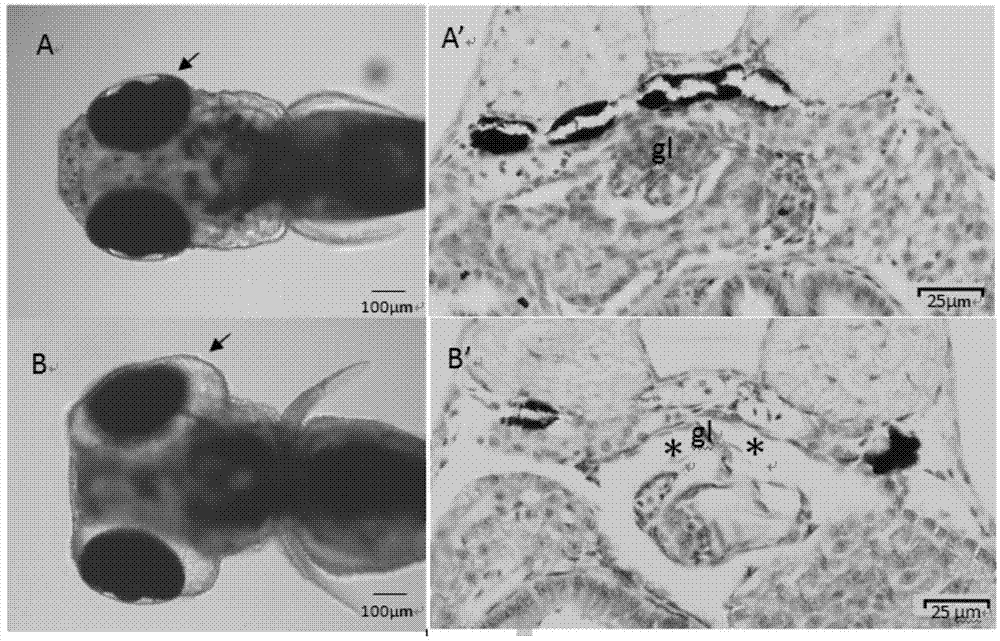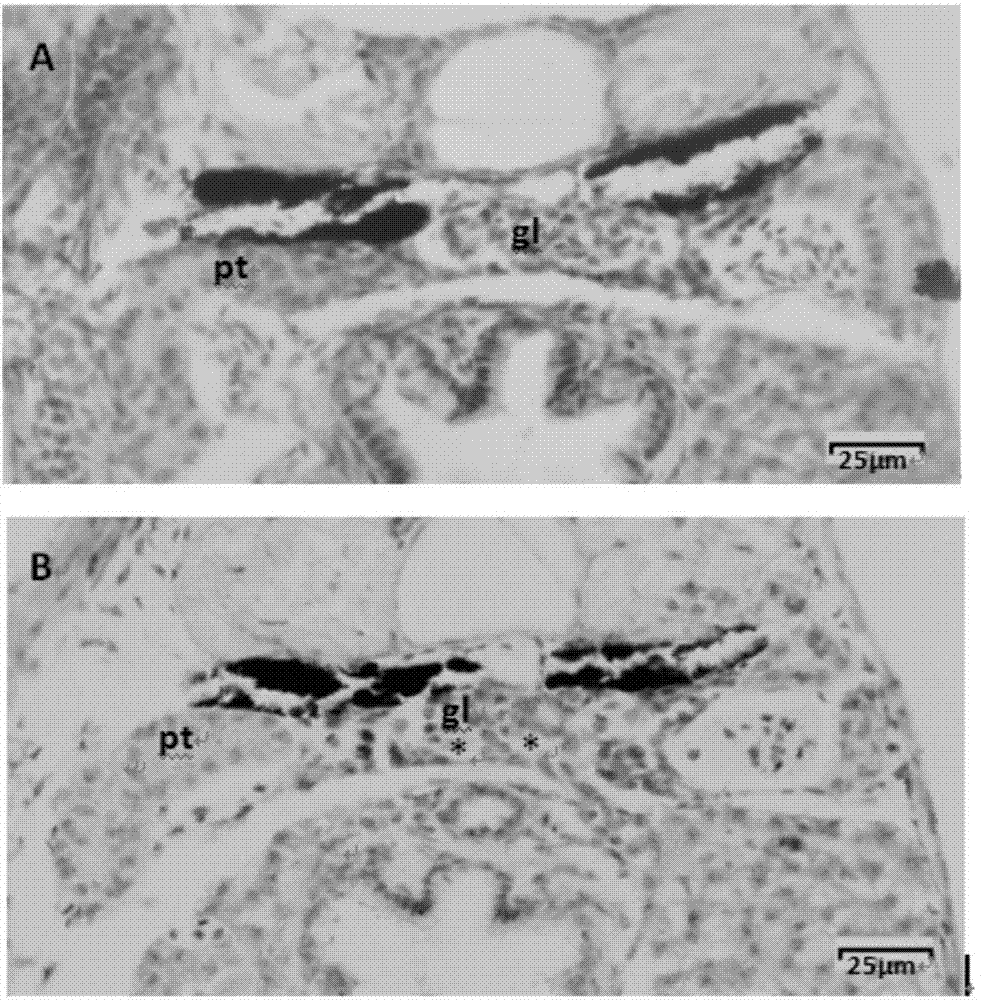Method for evaluating kidney toxicity of compounds through detecting contents of creatinine in zebra fish tissues
A kidney toxicity and compound technology, applied in the field of toxicology detection, can solve problems such as difficulty in obtaining blood or urine samples, small size of zebrafish embryos, etc., and achieve the effects of reducing experimental costs, reducing errors, and improving accuracy and reliability.
- Summary
- Abstract
- Description
- Claims
- Application Information
AI Technical Summary
Problems solved by technology
Method used
Image
Examples
Embodiment 1
[0063] Example 1: Nephrotoxicity of Different Concentrations of Aristolochic Acid A on Zebrafish Embryos (4dpf)
[0064] Reagent: Aristolochic acid A standard was purchased from China National Institutes for Food and Drug Control, dissolved in dimethyl sulfoxide to prepare a 5 mg / mL storage solution, stored at 4°C, and the longest storage time was 1 month. Dilute to desired concentration.
[0065] A standard 24-well cell culture plate was selected, and an appropriate amount of aristolochic acid A stock solution was added to each well, and diluted to 2 mL with culture water to obtain three concentration groups of 0.5 μg / mL, 2 μg / mL and 4 μg / mL. The control group was an aqueous culture solution containing 0.5‰DMSO, with a volume of 2 mL. Carefully blow and mix the solutions in all the sample wells with a pipette, randomly pick up 4-day-old zebrafish embryos, and transfer them into the above sample wells, with 15 embryos in each well, 4 wells in each group, and three parallel re...
Embodiment 2
[0081] Embodiment 2: the toxic effect of citrinin on zebrafish embryo (4dpf) kidney
[0082] Reagents: Citrinin standard product was purchased from China National Institute for the Control of Pharmaceutical and Biological Products. It was hydrolyzed with a culture solution containing 25% (V / V) ethanol to prepare a 10 mM stock solution, stored at 4°C, and diluted to the required concentration with culture water during experiments.
[0083]A standard 6-well cell culture plate was selected, and an appropriate amount of citrinin stock solution was added to each well, diluted with culture water to a concentration level of 25 μmol / L, and the final volume of each well was 6 mL. The control group was cultured aqueous solution containing equal concentration of ethanol, with a volume of 6 mL. Carefully blow and mix the solution in all sample wells with a pipette, randomly pick up 4-day-old zebrafish embryos, and transfer them into the above sample wells, with 60 embryos per well, and th...
PUM
 Login to View More
Login to View More Abstract
Description
Claims
Application Information
 Login to View More
Login to View More - R&D
- Intellectual Property
- Life Sciences
- Materials
- Tech Scout
- Unparalleled Data Quality
- Higher Quality Content
- 60% Fewer Hallucinations
Browse by: Latest US Patents, China's latest patents, Technical Efficacy Thesaurus, Application Domain, Technology Topic, Popular Technical Reports.
© 2025 PatSnap. All rights reserved.Legal|Privacy policy|Modern Slavery Act Transparency Statement|Sitemap|About US| Contact US: help@patsnap.com



